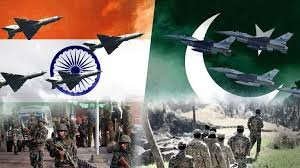India Attacks Pakistan
India Attacks Pakistan: What Happened Today?
On May 6, 2025 India Attacks Pakistan, tensions between two nuclear-armed neighbors—India and Pakistan—reached a critical point. Following the Pahalgam terror attack that killed 26 civilians in April, India launched a retaliatory operation named Operation Sindoor. This mission involved precision missile strikes on nine targets across Pakistan and Pakistan-occupied Jammu and Kashmir (PoJK).
This is the first time in recent years that India attacks Pakistan with such direct military action, specifically targeting infrastructure linked to groups like Lashkar-e-Taiba and Jaish-e-Mohammad, which India holds responsible for the April assault.
Strategic Objectives Behind the Strike
India stated that Operation Sindoor was a “measured and non-escalatory” response aimed solely at eliminating terrorist hubs. According to the Ministry of Defence, no Pakistani military bases were targeted, a move interpreted as a signal to avoid full-scale war.
The focus remained on:
- Destroying known terror training camps
- Disrupting militant supply lines
- Sending a strategic deterrent signal
Reports confirmed blackouts and explosions in Muzaffarabad, while Indian authorities monitored cross-border movements to preempt counter-strikes.
Pakistan’s Reaction and Military Readiness
Pakistan swiftly condemned the strikes, labeling them a violation of its sovereignty. A military spokesperson warned that the country reserves the right to respond “at a time and place of its choosing.”
In addition, Pakistan accused India of manipulating the flow of water from the Chenab River, further intensifying the situation. Military units were reportedly placed on high alert across Punjab and Azad Kashmir regions.
International Response and Diplomatic Concerns
The global community has voiced alarm over the recent escalation. The United Nations, United States, and European Union have all called for immediate de-escalation and dialogue.
Analysts caution that when India attacks Pakistan, the risk of conflict spiraling out of control is very real due to both nations’ nuclear capabilities and historical grievances.
Historical Context: Why This Matters
This isn’t the first time that military action has flared between the two countries. However, the frequency and precision of today’s strikes suggest a strategic shift in India’s response doctrine—from passive diplomacy to active deterrence.
The political climate in India, with elections nearing, may also be playing a role in shaping assertive national defense decisions.
What Happens Next?
The future remains uncertain. Possible outcomes include:
- Diplomatic negotiations via back-channel talks
- International mediation to reduce hostilities
- Potential retaliation from Pakistan in the form of cyber or proxy warfare
One thing is clear: any time India attacks Pakistan, it sends ripples through the region—economically, politically, and socially.
Conclusion
The strikes carried out under Operation Sindoor mark a significant development in the India-Pakistan relationship. By limiting targets to terror infrastructure, India aims to show restraint while also projecting strength. The world now watches closely, hoping that diplomacy prevails over escalation.




